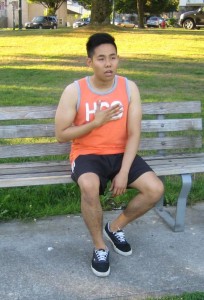How to Assist an Epileptic Victim – Epilepsy
A disorder of the brain, epilepsy causes its victim to have recurring seizures. Seizures occur when clusters of the neurons, or nerve cells, which communicate through electrical impulses, have disrupted communication.

How To Deal With A Head Concussion
The human head is incapable of sustaining hard blows from incidents such as motor vehicle accidents, sports injuries, falls and blows from blunt objects.

Migraines in Children
Headaches are common and just like adults, children can experience different types of headaches, including migraines in children. Migraine is a moderate to severe throbbing,


CPR and first aid training are among the most sought-after programs across North America, with increasing awareness of heart disease and its risks. More people are recognizing the life-saving impact of CPR, as immediate chest compressions can double or even triple a person’s chance of survival during cardiac arrest.
We offer comprehensive CPR training at convenient locations in both the United States and Canada:
U.S. Locations
📍 Los Angeles, CA
📍 San Francisco, CA
📍 Honolulu, HI
📍 Las Vegas, NV
📍 Seattle, WA
📍 Portland, OR
Canadian Locations
📍 Vancouver, BC
📍 Richmond, BC
📍 Coquitlam, BC
📍 North Vancouver, BC
📍 Surrey, BC
📍 Kamloops, BC
📍 Kelowna, BC
📍 Lethbridge, AB
📍 Grande Prairie, AB
📍 Calgary, AB
📍 Edmonton, AB
📍 Regina, SK
📍 Winnipeg, MB
All Canadian courses meet provincial regulations for first aid training and align with ILCOR (International Liaison Committee on Resuscitation) CPR guidelines.
CPR & Life Support Training Programs
We provide training for both laypersons and healthcare professionals, with programs categorized into:
✅ Basic CPR Training – For the general public
✅ Basic CPR for Healthcare Providers
✅ Basic Life Support (BLS) for Healthcare Providers
✅ Advanced Cardiac Life Support (ACLS)
✅ Pediatric Advanced Life Support (PALS)
Re-certification is available for BLS, ACLS, and PALS. If you have an existing CPR certification, be sure to renew it before it expires, as expired credentials are not eligible for re-certification. All certifications are valid for two years.
The Impact of Heart Disease & CPR Training
Heart disease claims over 500,000 American lives annually, with 80 million people living with hypertension. Lifestyle choices continue to contribute to rising cardiovascular risks, making CPR training essential for both professionals and everyday individuals.
Unfortunately, more than half of those trained in CPR lack the confidence to apply their skills in real emergencies. That’s why our programs focus on hands-on practice, ensuring you gain real-world experience with state-of-the-art equipment like mannequins, AEDs, and first aid kits.
Train with us and gain the confidence to save a life.
.
